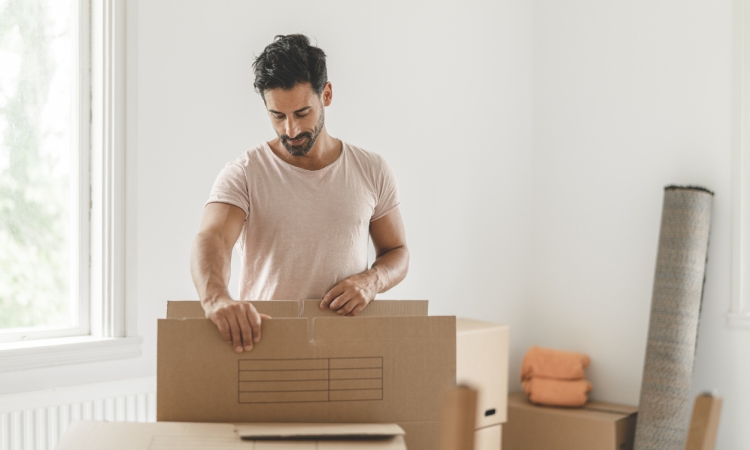No matter your reason for needing storage, renting a unit is a great way to solve the issue of not having enough space at home. While storage units are readily available in most every city in the US, utilizing them isn’t as simple as tossing your belongings inside and hoping for the best. Here are some helpful tips on how to pack and prep your belongings for storage to keep them in top shape.
And if your storage needs are part of a larger relocation, it’s worth ensuring you’re working with a mover you can rely on. These helpful tips for choosing a trusted moving company can guide you toward providers who will handle both your move and your stored belongings with professionalism and care.
Deciding on items for storage
Packing items for storage is a great opportunity to decide what you need and what can get thrown away or given to charity. Only pack things that you’re sure you’ll use again. Remember, the more stuff you pack, the larger storage unit you’ll need and the more you’ll pay.
Invest in quality storage containers
To make sure your items are protected, you need the right packing boxes. Investing in boxes of similar size allows you to stack them with ease, and choosing new cardboard boxes over old ones means they’ll remain sturdy. Do a thorough inspection before packing – there should be no dampness or signs of damage on your cardboard boxes.
Even though they’re more expensive than cardboard, use plastic storage containers when you can. They are more durable and can last for many years. Whatever you do, don’t pack your items in plastic bags, because plastic bags trap moisture and become hubs for mold and mildew.
Avoid hazardous items
Storage facilities won’t allow you to store items that are dangerous in nature, or items that are perishable. Your storage facility should have a list of items that should not be stored, so make sure to check that list items before you start packing up your items.
Tips to get common household items ready for storage
1. Clothes
Because most people do not wear their entire closet year-round, clothes are commonly stored items. The best way to store clothing is to hang it inside wardrobe boxes or garment bags so it stays free of dust and wrinkles.
2. Furniture
Before storing furniture, protect surfaces with furniture cleaner and protect the legs with bubble wrap. To safeguard your pieces from dust and scratches, cover them with heavy blankets and make sure to utilize the spaces in and around your furniture to store smaller items – that way, you get the most out of your unit.
3. Mattresses
Before you store a mattress, inspect it to make sure it’s completely dry, examine it for signs of infestation, and consider placing it in direct sunlight for several hours. You might want to invest in a mattress storage bag from a furniture store, as these bags are made of thick polyethylene and will protect your mattress from dust, moisture, and dirt while it’s inside the storage unit.
Don’t place your mattress on its side or on either end in the storage unit, as this will cause it to degrade. Mattresses can’t bear their own weight for a significant amount of time.
4. Appliances
If you plan on storing your refrigerator or freezer, defrost them completely to avoid water damage and make sure they’re 100% dry before packing them up. Use baking soda to wipe down the insides and discourage foul odors.
If you’re storing your washing machine or dishwasher, drain all the water before packing them, and secure all hoses and electric cables to avoid accidents.
To encourage ventilation, keep the doors of your appliances slightly ajar.
5. Books
To ensure that your books are 100% dry, leave them in a sunny room for a few days. Instead of packing as many books as you can into large boxes, use small cardboard boxes – remember, books can get heavy. Once they’re packed, tape the boxes shut to keep moisture out.
6. Fragile Items
Remember to pack each fragile item individually in packing paper, then bubble wrap. For parts that are very delicate, use extra sheets of bubble wrap, and don’t forget to line the bottoms of your boxes with padding that can act as a shock absorber.
Label your boxes
Whether you’re labeling your delicate boxes as “FRAGILE” or simply writing down what’s inside certain storage containers, labels save a lot of time when it comes to unpacking – or if you end up looking for something specific inside your unit down the road.




